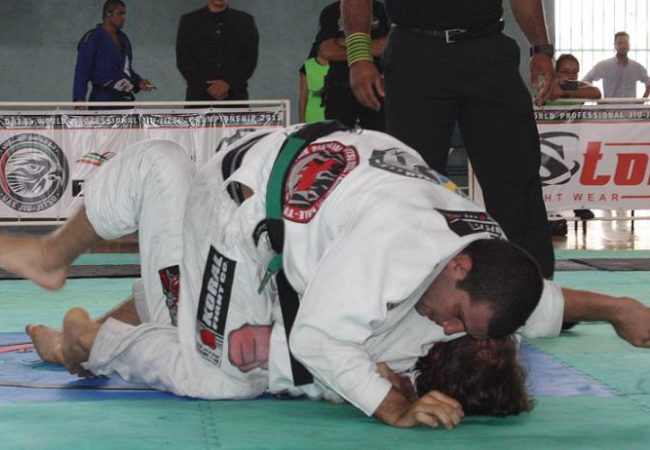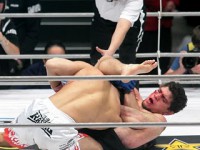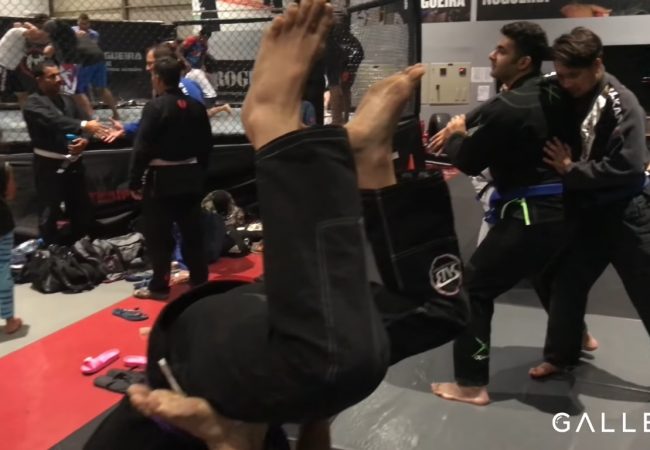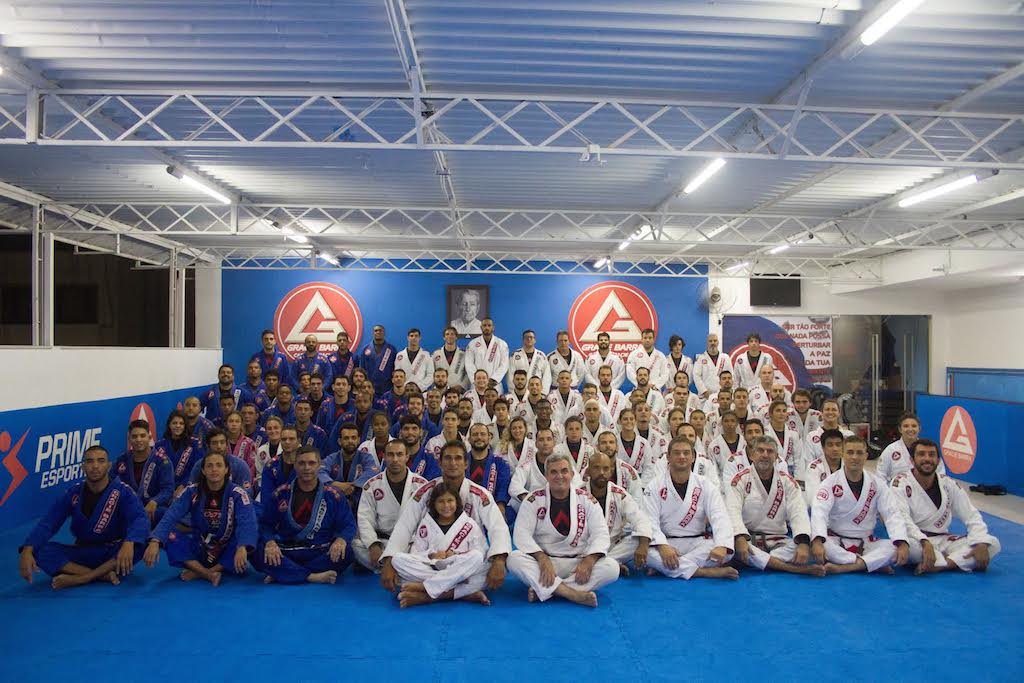
Top-tier Tuesdays at GB HQ Rio: Jefferson Moura has been promoting knowledge exchange and unity at the classic Barra da Tijuca school. Gustavo Aragão/GRACIEMAG
With firm and clear instructions, Jefferson Moura quickly divides the 103 athletes scattered across the classic 200-square-foot blue dojo surrounded by red shields. “Come on, guys. Anyone who is less than 80kg here; over 80kg there.”
The training session, with 23 black belts and a handful of elite competitors, is segmented into four eight-minute sets with eight minutes’ rest. With hard-hitting practitioners of all belts, the rhythm can be unforgiving for those who have not skipped the carnival in Rio de Janeiro.
“My God, it was raining, why did I decide to come today? Why did not I stay home?” jokes a brown belt in his thirties, exhausted, on Tuesday, February 27. For those who are not in good shape, the punishment is heavy. At Gracie Barra Rio Matriz, by the way, the Punishment comes in at 2 meters and 114kg. It is the giant brown belt Vinicius “Punishment,” a student of Jefferson that functions as a thermometer for the tougher students. Anyone who survives the “Punishment,” rest assured, is ready for most challenges.
“We created this championship training every Tuesday with the aim of preparing students for the main national and international competitions. You don’t often get the opportunity to gather more than 20 black belts on a single mat. This translates to experience. To make an athlete a champion, not only does the teacher need to have good technique; it takes dedication and a lot of psychology,” says Jefferson Moura, who has led Gracie Barra Rio Matriz since 2009, the first academy of Master Carlos Gracie Jr.
For two hours, students have questions for Professor Jefferson and other school owners, and have the opportunity to take on games different from those they are accustomed to. “Students from all Gracie Barra units are most welcome. Here they learn and have the opportunity to experience physically and mentally situations that they will face in championships, with the rotation of opponents, the training against strangers. The student leaves here more balanced and more confident,” says the 40-year-old black belt, who has been training since he was 15.
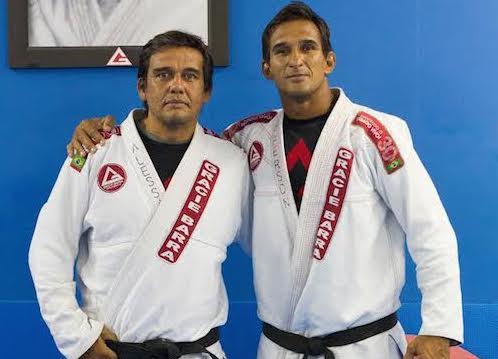
Sandro Marins and Jefferson Moura. Gustavo Aragão
For Alessandro “Sandro” Marins, a five-stripe black belt, the weekly training has another plus: “Years ago, all the best black belts of the team were trained under one roof, which kept the team strong and united for the tournaments Today, with 40 units of the academy only in Rio, this has become more difficult. With this top-notch meet organized by Professor Jefferson, it is possible to exchange information and reinforce the unity of the athletes. They’re all always training together.”
For Professor Osvaldo Neto, four degrees, the Tuesday meets will yield fruit soon: “I’m sure that the black belt world champions coming from here won’t be one or two, but several.”
Since a good leader is always in search of new challenges, Professor Jefferson has other plans already lined up. The next step is to develop this work of training new Jiu-Jitsu champions in the U.S. The address has already been chosen: Chicago, in the state of Illinois, where Jefferson will be the head teacher of aurora GB. Plans for the future are not scarce for this teacher, who has taught Jiu-Jitsu for 20 years and was a black belt world champion in 2003, in addition to several national and international titles. “It is worth reiterating that within Jiu-Jitsu there is a long way to go,” says the teacher. “After many years of training and winning titles, the most rewarding thing is the transfer of knowledge. Today I feel accomplished with the work I have been doing in Brazil. Now the challenge will be to teach in another country.”

